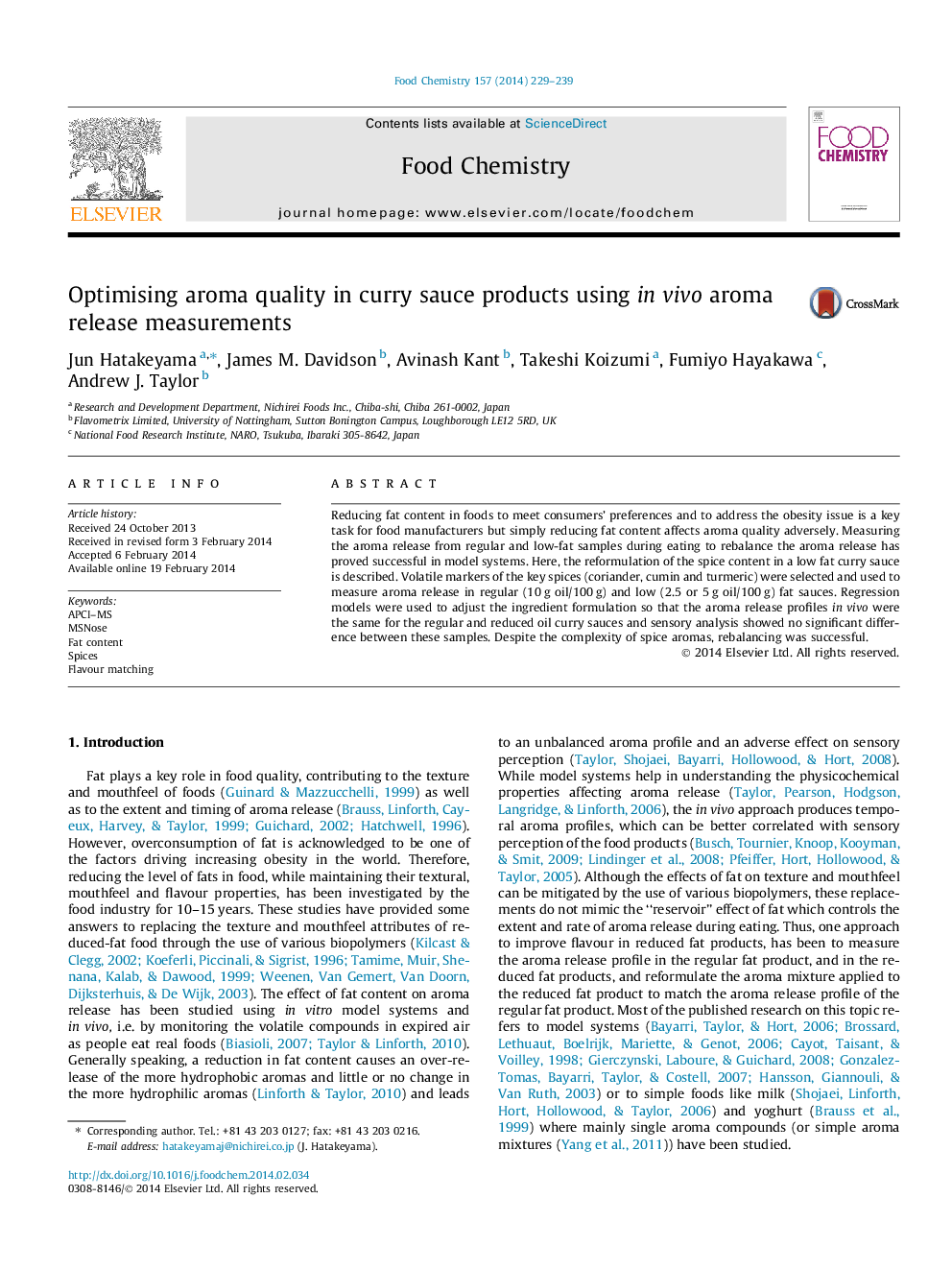| Article ID | Journal | Published Year | Pages | File Type |
|---|---|---|---|---|
| 1184574 | Food Chemistry | 2014 | 11 Pages |
•Aroma release from regular and low fat curry sauces was measured during eating.•A model of the effect of fat content on aroma release from spices was selected.•The model was used to reformulate the aroma release of a low fat curry sauce.•The aroma release of the reformulated sauce was the same as the regular fat sauce.•Sensory comparison also showed no significant difference.
Reducing fat content in foods to meet consumers’ preferences and to address the obesity issue is a key task for food manufacturers but simply reducing fat content affects aroma quality adversely. Measuring the aroma release from regular and low-fat samples during eating to rebalance the aroma release has proved successful in model systems. Here, the reformulation of the spice content in a low fat curry sauce is described. Volatile markers of the key spices (coriander, cumin and turmeric) were selected and used to measure aroma release in regular (10 g oil/100 g) and low (2.5 or 5 g oil/100 g) fat sauces. Regression models were used to adjust the ingredient formulation so that the aroma release profiles in vivo were the same for the regular and reduced oil curry sauces and sensory analysis showed no significant difference between these samples. Despite the complexity of spice aromas, rebalancing was successful.
